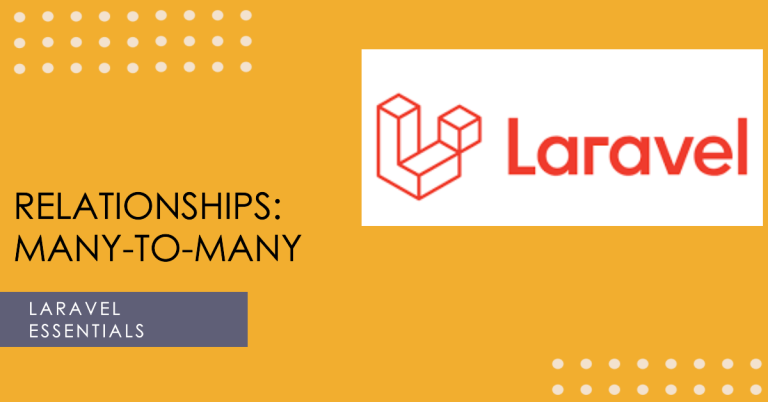Laravel, a widely-used PHP framework, boasts a robust Object-Relational Mapping (ORM) system known as Eloquent. In the realm of database management, relationships play a pivotal role in organizing and retrieving data efficiently. Among the various types of relationships, the “many-to-many” relationship stands out due to its unique structure and utility. This article delves into the intricacies of setting up a many-to-many relationship in Laravel.
Table of Contents
Understanding Database Relationships
In database design, relationships are fundamental in connecting tables and ensuring data integrity. The simplest form is the one-to-one relationship, where a single record in one table corresponds to a single record in another. A step further is the one-to-many relationship, where a record in one table can relate to multiple records in another. However, the many-to-many relationship is distinct, allowing multiple records in one table to relate to multiple records in another, showcasing its significance in complex data structures.
| Relationship Type | Definition | Use Case |
|---|---|---|
| One-to-One | Single record relates to one record | User to Profile |
| One-to-Many | Single record relates to multiple records | Author to Articles |
| Many-to-Many | Multiple records relate to multiple records | Students to Courses |
Setting Up a Many-to-Many Relationship in Laravel
Database Migrations
To initiate a many-to-many relationship in Laravel, one must first set up an intermediary table, commonly referred to as a pivot table. This table primarily holds foreign keys that point to the primary keys of the related tables.
Schema::create('user_role', function (Blueprint $table) {
$table->unsignedBigInteger('user_id');
$table->unsignedBigInteger('role_id');
$table->foreign('user_id')->references('id')->on('users');
$table->foreign('role_id')->references('id')->on('roles');
});Eloquent Models
Once the pivot table is in place, the next step involves defining the many-to-many relationship within the Eloquent models. This is achieved using the belongsToMany() method. For instance, if we have a User model and a Role model, the relationship can be defined as:
public function roles() {
return $this->belongsToMany(Role::class);
}In this setup, the belongsToMany() method links the User model to the Role model through the pivot table, enabling seamless data retrieval and manipulation between the two entities.
Working with Many-to-Many Data
Retrieving Related Records
In Laravel, working with many-to-many relationships is streamlined with Eloquent. To fetch related records, the with() method is employed. This method allows for eager loading of related data, ensuring efficient querying.
$users = User::with('roles')->get();Additionally, one can filter the related data to retrieve specific records, enhancing the precision of data retrieval.
Inserting and Updating Data
Managing many-to-many data in Laravel is straightforward. To associate records, the attach() method is used, while detach() removes associations. For updating multiple associations simultaneously, the sync() method is invaluable.
$user->roles()->attach($roleId);
$user->roles()->detach($roleId);
$user->roles()->sync([$roleId1, $roleId2]);For bulk insertions, the saveMany() method proves handy, allowing multiple related records to be saved at once.
Advanced Eloquent Techniques
Eloquent offers advanced techniques to further optimize many-to-many operations. Eager loading, for instance, reduces the number of queries, enhancing performance. Additionally, Laravel provides options to customize data in pivot tables, offering flexibility in data management.
Common Pitfalls and Best Practices
Avoiding N+1 Query Problem
One common pitfall in database operations is the N+1 query problem. This arises when individual queries are executed for each related record. To circumvent this, Laravel recommends using eager loading, ensuring that related data is loaded in a single query, promoting efficient querying.
Keeping Pivot Tables Clean
Maintaining the integrity of pivot tables is crucial. It’s advisable to regularly remove orphaned records that no longer have associations. Implementing database constraints can also prevent the creation of orphaned records, ensuring data consistency.
Naming Conventions
Adhering to Laravel’s naming conventions for pivot tables is essential for seamless operations. By default, Laravel expects pivot tables to be named in alphabetical order based on related model names. However, if customization is needed, Laravel offers options to specify custom table and column names, providing flexibility in database design.
FAQs
How does Laravel handle many-to-many relationships behind the scenes?
Laravel utilizes its powerful ORM, Eloquent, to manage database relationships. For many-to-many associations, Laravel employs pivot tables, which serve as intermediary tables containing foreign keys from both related tables, facilitating the relationship.
Can I add additional columns to a pivot table in Laravel?
Absolutely. Laravel allows for the addition of custom columns to pivot tables. Once added, you can retrieve and work with these columns just like any other data, enhancing the versatility of many-to-many relationships.
How do I filter records based on pivot table data in Laravel?
To filter records based on data within a pivot table, Laravel provides the wherePivot() method. This method allows for precise querying based on specific pivot table column values.$user->roles()->wherePivot('column_name', 'value')->get();
What’s the difference between attaching and syncing in Laravel?
While both methods manage many-to-many associations, they serve different purposes. The attach() method adds a new relationship without affecting existing ones. On the other hand, the sync() method updates the relationship to match the provided list, adding new associations and removing any that are not in the list.
Conclusion
The many-to-many relationship in Laravel underscores the framework’s commitment to providing developers with efficient and intuitive tools for database management. As we’ve explored, Laravel’s features, from pivot tables to advanced querying methods, make handling complex relationships a breeze. We encourage developers to dive deeper into Laravel’s capabilities and harness its full potential in their projects.

